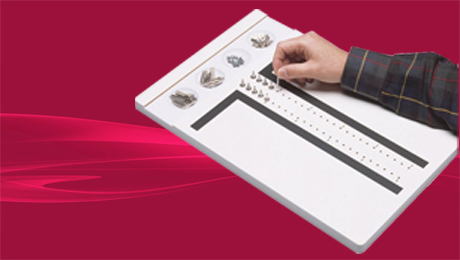
Purdue Pegboard Test
Description
The purpose of this test is to measure unimanual and bimanual finger and hand dexterity. The Purdue Pegboard was developed in the 1940s as a test of manipulative dexterity for use in personnel selection (Tiffin, 1968; Tiffin & Asher, 1948). In addition to this use, the Purdue Pegboard Test has been employed in neuropsychological assessment to assist in localizing cerebral lesions and deficits (Reddon et al., 1988). The board consists of two parallel rows of 25 holes each. Pins (pegs) are located at the extreme right-hand and left-hand cups at the top of the board. Collars and washers occupy the two middle cups. In the first three subtests, the subject places as many pins as possible in the holes, first with the preferred hand, then with the nonpreferred hand, and finally with both hands, within a 30-s time period. To test the right hand, the subject must insert as many pins as possible in the holes, starting at the top of the right-hand row. The left-hand test uses the left row. Both hands then are used together to fill both rows top to bottom. In the fourth subtest, the subject uses both hands alternately to construct “assemblies,” which consist of a pin, a washer, a collar, and another washer. The subject must complete as many assemblies as possible within 1 minute.
Administration
If the Purdue Pegboard Test is to be used as a basis for employee selection, the test must be administered to all applicants according to the standardized test procedure.
Test Batteries and Timing
The test administrator will compile 5 separate scores from the complete test procedure, one for each test battery:
1. Right Hand (30 seconds)
2. Left Hand (30 seconds)
3. Both Hands (30 seconds)
4. Right + Left + Both Hands (Note: This is not an actual test; it is a mathematical sum calculation.)
5. Assembly (60 seconds)
The test batteries should be done in this consecutive order, unless the subject is left-handed, where test batteries 1 and 2 are reversed: Left Hand first and then Right Hand. Three test trials are highly recommended: the more trials administered, the more test score reliability.
Note: The test is well suited for either group or individual testing.


